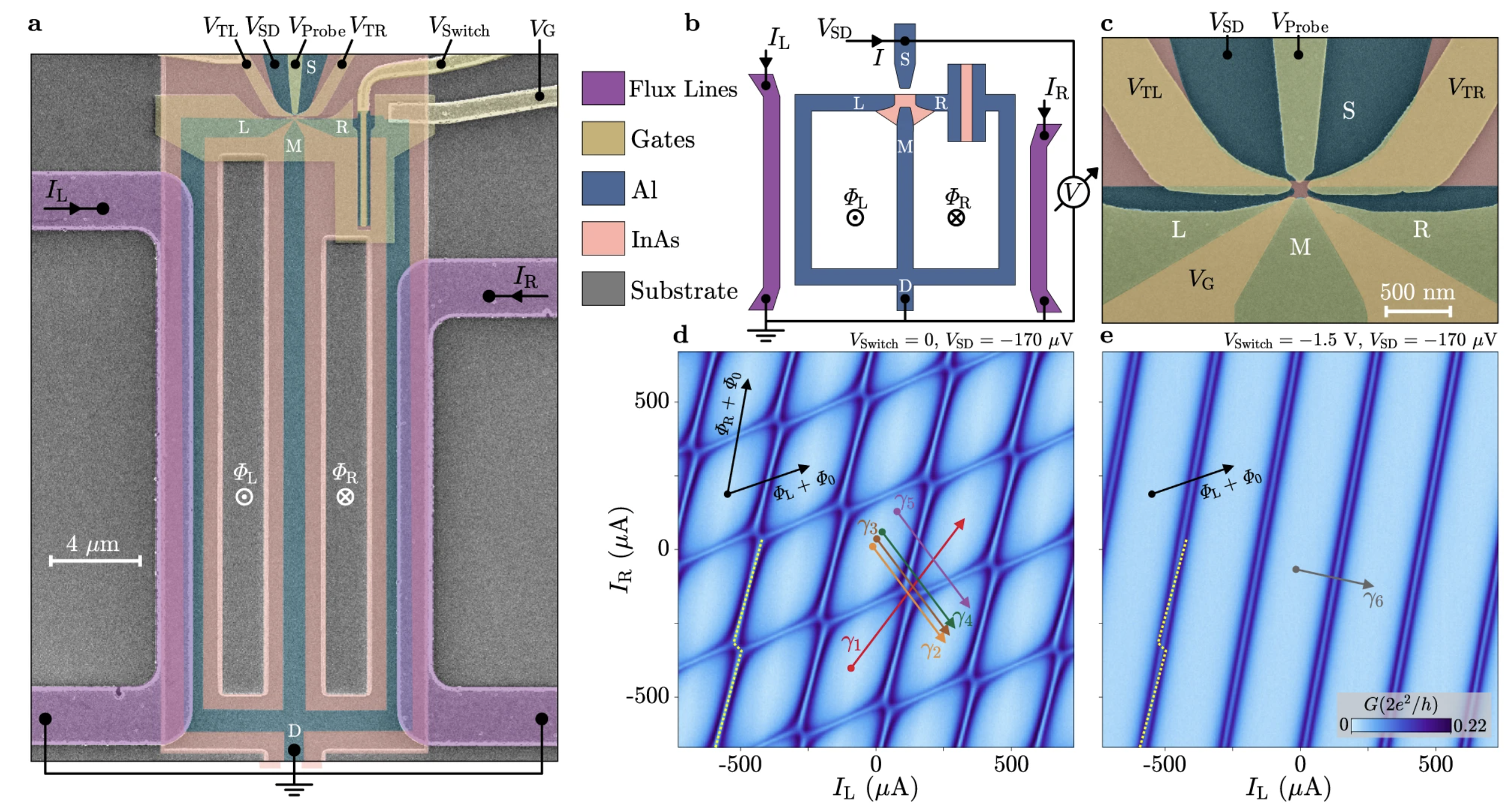
Phase-engineering the Andreev band structure of a three-terminal Josephson junction
In hybrid Josephson junctions with three or more superconducting terminals coupled to a semiconducting region, Andreev bound states may form unconventional energy band structures, or Andreev matter, which are engineered by controlling superconducting phase differences. Here we report tunnelling spectroscopy measurements of three-terminal Josephson junctions realised in an InAs/Al heterostructure. The three terminals are connected to form two loops, enabling independent control over two phase differences and access to a synthetic Andreev band structure in the two-dimensional phase space. Our results demonstrate a phase-controlled Andreev molecule, originating from two discrete Andreev levels that spatially overlap and hybridise. Signatures of hybridisation are observed in the form of avoided crossings in the spectrum and band structure anisotropies in the phase space, all explained by a numerical model. Future extensions of this work could focus on addressing spin-resolved energy levels, ground state fermion parity transitions and Weyl bands in multiterminal geometries.
M. Coraiola, D. Z. Haxell, D. Sabonis, H. Weisbrich, A. E. Svetogorov, M. Hinderling, S. C. ten Kate, E. Cheah, F. Krizek, R. Schott, W. Wegscheider, J. C. Cuevas, W. Belzig, and F. Nichele
Nat. Commun. 14, 6784 (2023)
